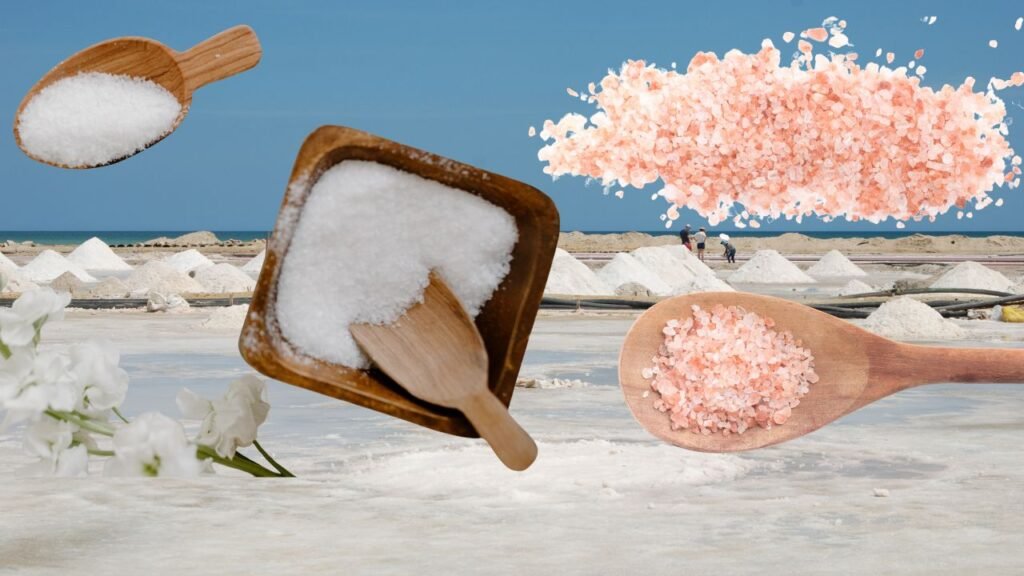White Salt vs Black Salt: Which One Should You Use?
Salt is a must-have in every kitchen. But did you know that not all salts are the same? White salt (regular table salt) and black salt (kala namak, in hindi) are two common types with different flavors, uses, and health benefits.
Let us compare white salt and black salt, see their pros and cons, and check which one is best for out needs.
What Is White Salt?
White salt, also known as table salt, is the most common type of salt. It is highly refined, meaning most impurities and minerals are removed. It usually contains iodine, which is added to prevent iodine deficiency.
Pros of White Salt:
✅ Easily available – Found in every grocery store.
✅ Affordable – Cheaper than black salt.
✅ Iodine-rich – Helps prevent thyroid problems.
✅ Neutral taste – Works well in all dishes.
Cons of White Salt:
❌ Highly processed – Loses natural minerals during refining.
❌ Can cause high blood pressure – Excessive intake may lead to health issues.
❌ Contains additives – Some brands add anti-caking agents.
When to Use White Salt?
-
Everyday cooking (curries, soups, snacks).
-
Baking (since it dissolves easily).
-
If you need iodine in your diet.
What Is Black Salt?
Black salt, or kala namak, is a volcanic rock salt popular in Indian cuisine. It has a sulfur-like smell and a unique eggy taste, making it great for vegan dishes. Unlike white salt, it is unrefined and contains minerals like iron and sulfur.
Pros of Black Salt:
✅ Rich in minerals – Contains iron, sulfur, and magnesium.
✅ Good for digestion – Helps with bloating and acidity.
✅ Low sodium – Better for blood pressure than white salt.
✅ Unique flavor – Adds a tangy taste to dishes.
Cons of Black Salt:
❌ Strong smell & taste – Not everyone likes the sulfur-like flavor.
❌ Less available – Harder to find outside specialty stores.
❌ Not iodized – Lacks iodine, which is essential for thyroid health.
When to Use Black Salt?
-
Vegan cooking (mimics egg flavor in tofu scrambles).
-
Chaat masala & chutneys (adds a tangy kick).
-
Ayurvedic remedies (used for digestion and cooling effects).
White Salt vs Black Salt: Which Is Healthier?
| Feature | White Salt | Black Salt |
|---|---|---|
| Processing | Highly refined | Unrefined, natural |
| Minerals | Low (mostly just sodium) | High (iron, sulfur, etc.) |
| Sodium Level | High | Lower |
| Iodine | Yes | No |
| Taste | Salty, neutral | Sulfuric, egg-like |
If you need iodine and a mild taste, white salt is better.
If you want minerals and a unique flavor, black salt is a great choice.
Final Verdict: Which One Should You Choose?
Both salts have their benefits.
-
For daily cooking, white salt is more versatile.
-
For health benefits & special dishes, black salt is a great alternative.
You can even use both depending on the recipe!
Tip: If you have high blood pressure, try reducing white salt and switching to black salt occasionally.
Did You Know?
-
Black salt is used in Ayurveda for its cooling properties.
-
Some people sprinkle black salt on fruits like watermelon for extra flavor!
Now that you know the difference, which salt will you try next? Let us know in the comments!
Enjoyed this article? Share it with your friends! 😊
